Topic 1: Cell biology 
This page contains multiple choice questions in the style of Paper 1 of the Biology exams.
They test the breadth of your knowledge of the understandings and skills about cell biology.
To spend more time reviewing the topic before answering these questions, use the revision resources.
Cell biology revision resources
This page lists the understandings and skills expected for Topic 1 and links to the sub-topic pages which contain detailed revision notes, activities and past paper style questions. Great for revision.
Learn from any mistakes. Every question has an examiner's explanation that appears when you check your answers.
Identify the stage of mitosis for the two cells X and Y.
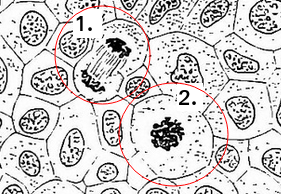
Skill: Identification of phases of mitosis in cells viewed with a microscope or in a micrograph
(prophase, metaphase, anaphase and telophase).
This box contains a lung waiting for a transplant operation.
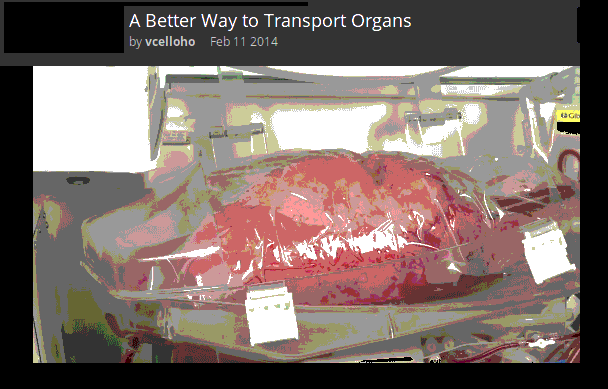
What is special about the solution inside the box which surrounds the tissue?
Tissues and organs must be kept in a solution with the same osmolarity as the cytoplasm of the cells to prevent osmosis. If they were kept in pure water, osmosis would carry water into the cells and they would burst, causing damage to the cells. If the solution was hypertonic, the tissue would lose water (and gain ions).
The graph below shows the % change in mass of carrot parenchyma slices at different concentrations of sucrose.
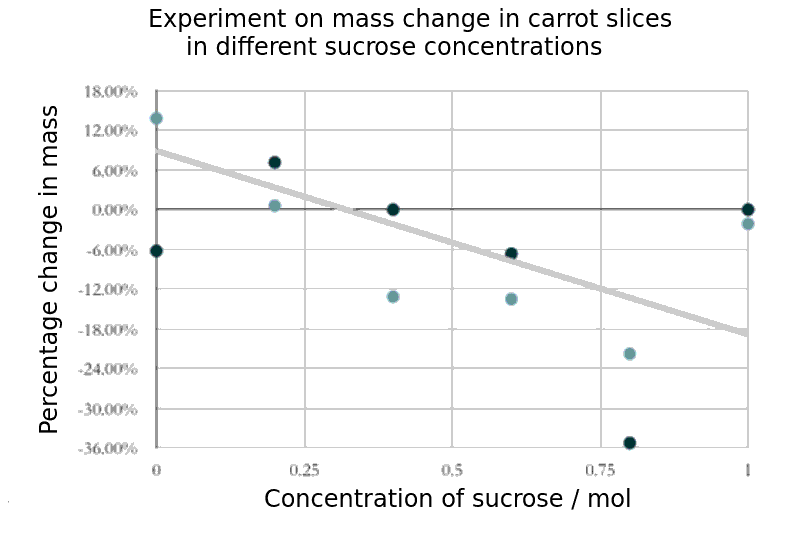
Which of the following is the best estimate of the molarity of the cytoplasm of these cells?
When a sample of cells show no change in mass, then the net movement of water by osmosis must be zero. This shows the concentration of the cytoplasm of the cells. In this graph it would be about 0.3 mol
Which property of phospholipid molecules describes the fact that they have both hydrophobic and hydrophilic parts?
Phospholipids form bilayers in water due to the amphipathic properties of phospholipid molecules. The hydrophobic tails attract each other and the hydrophilic phosphates are attracted to the water.
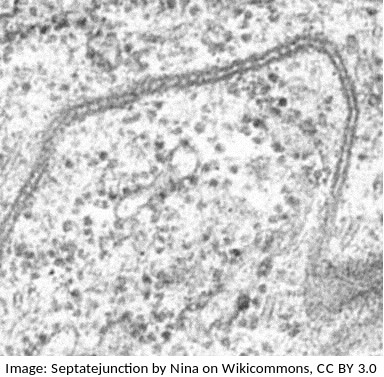 The photograph is from an electron microscope image of a membranes.
The photograph is from an electron microscope image of a membranes.
Parallel dark lines are clearly seen.
In electron micrography, heavy metal stains are often used to enhance contrast. DNA and Proteins often show as dark areas because these molecules can attach to the stain.
Which of the following interpretations is most similar to the proposal of the Daveson-Danielli model of membranes?
Students are expected to know how to use evidence from electron microscopy to support an idea about membranes. One illustration of this is the proposal of the Davson-Danielli model.
Further evidence lead to the falsification of the Davson-Danielli model and the proposal of the fluid mozaic model.
If you found a eukaryote cell in an electron microscope image, and it contained a lot of rER, Golgi apparatus and many darkly stained vesicles, what do you think the function of the cell is most likely to be?
(eg. goblet cells which make mucus (a protien) will contain lots of rER and vesicles of musus, and palisade mesophyll cells which do photosynthesis will contain lots of chloroplasts)
The 'Cell theory' explains the nature of living things.
Which statement best describes Cell theory?
According to cell theory, living organisms are composed of cells.
Cells come from pre-existing cells and cells are the smallest using of life.
Cell theory covers most, but not all cases.
Which one of these statements is an exception?
Exceptions to cell theory are : multinucleated striated muscle the giant single celled Acetabularia algae?
Also, organisms consisting of only one cell carry out all functions of life in that cell. e.g. Paramecium, Chlorella.
What is the importance of surface area to volume ratio to cells?
Surface area to volume ratio is important in the limitation of cell size. The lager the volume, the greater the need for materials which have to be exchanged over the surface of the cell.
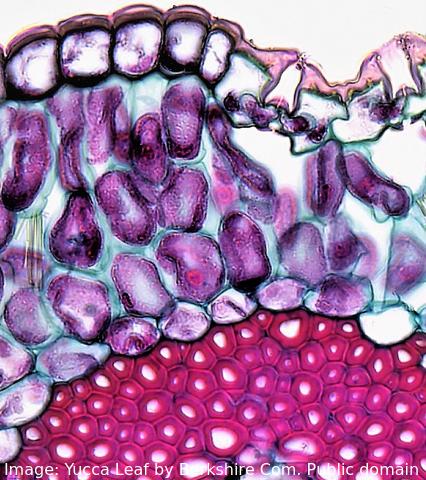 The image shows a range of different cell types in the leaf of a Yucca plant.
The image shows a range of different cell types in the leaf of a Yucca plant.
How do stem cells form this range of cells?
What is the process called?
Specialised tissues can develop by cell differentiation in multicellular organisms.
Differentiation involves the expression of some genes and not others in a cell.
Which label in the image below shows the process of endocytosis?
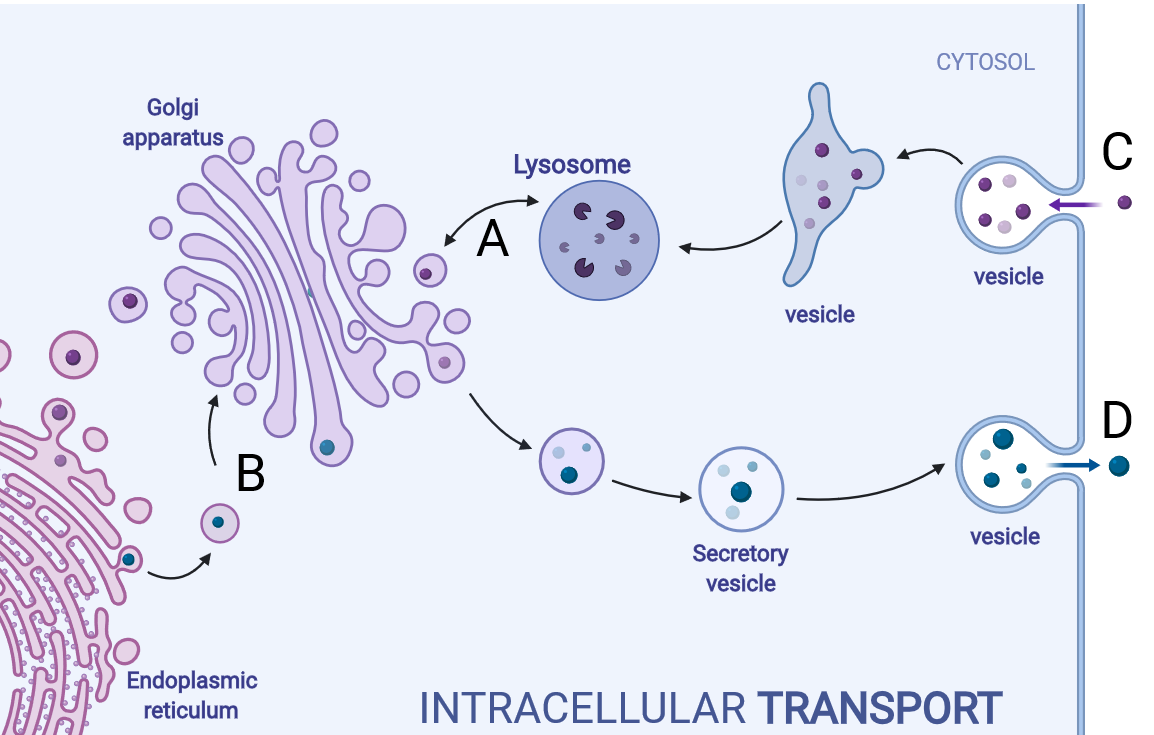
Endocytosis is the process where a substance is surrounded by the plasma membrane which forms a vesicle inside the cell that then moves into the cytoplasm, separating from the plasma membrane.
The 64 codons in the genetic code give rise to the same amino acids in nearly all organisms.
There is very little variation. This is evidence for a single common origin of life.
Differences in the frequency of amino acid use reflects the different genes in the two organisms.
Which is the best definition of a tissue?
Comment:Tissues may have one or several cell types and one or more functions
What best describes the organism in the light microscope image?

It is unicellular (one cell) and a eukaryote (has a nucleus) and not autotrophic.
What is the approximate length of the bacterial cell in the image?

The scale bar is 1 µm and the bacterium is approximately 3 times the length of the scale bar.
Which means of transport across a plasma membrane requires the molecule shown in the picture?

What tonicity should a saline drip have in comparison to human blood?

The saline drip must be isotonic to human blood to not cause water gain or loss from tissues.
What is the sequence of events that occur in a cell that is secreting a protein hormone?
1 Exocytosis
2 Vesicle formed by Golgi Body
3 Fusion of vesicle to plasma membrane
4 RER manufactures protein.
Ribosomes on the RER manufacture protein. This is packaged in vesicles by the Golgi Body and moves to the surface of the cell where the vesicle and plasma membrane fuse and exocytosis of the protein occurs.
Which organelles in a plant cell are believed to have originated as free-living prokaryotic cells?

Both the mitochondria and the chloroplast in plant cells are thought to have been free-living prokaryotes which evolved in a symbiotic relationship with a eukaryotic cell.
How do integral proteins remain within the phospholipid bilayer?
Integral proteins have a hydrophobic centre that associates with the fatty acid inner layer of the bilayer and a hydrophilic head that associates with the phospholipid heads.
Refresh this page to try a new set of 20 multiple choice questions. The questions will be different next time you visit. Great revision.

 Twitter
Twitter  Facebook
Facebook  LinkedIn
LinkedIn